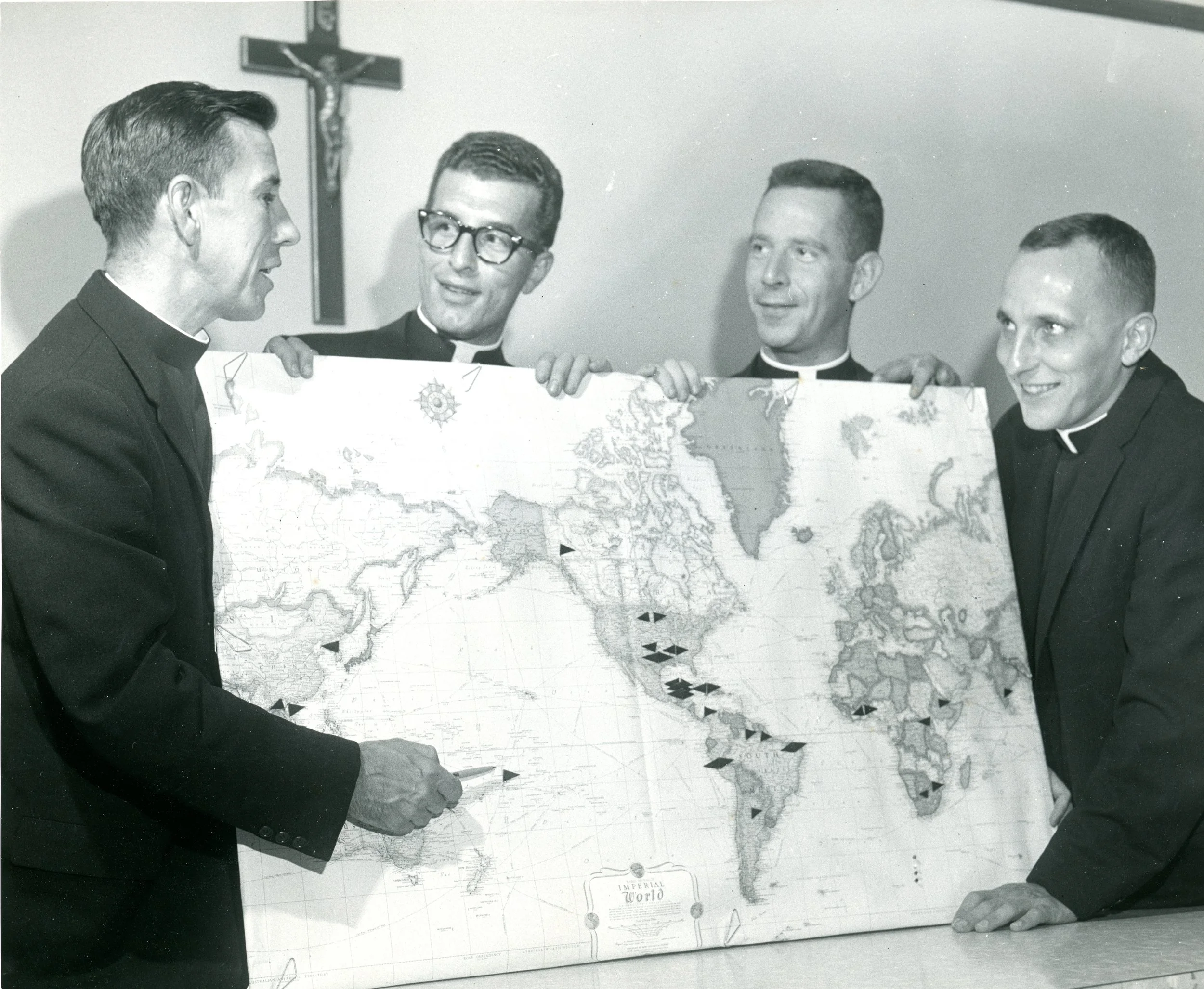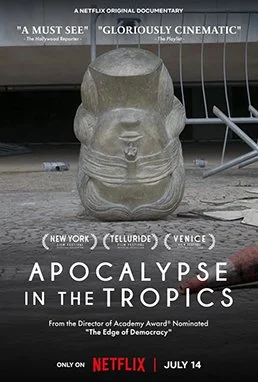As an integral part of my scholarship, I engage diverse audiences through public and digital humanities projects in the belief that such work enhance the depth, quality, and scope of historical scholarship.
Ongoing Projects
Priests around a map of Archdiocese of Milwaukee Missionaries, 1962. Courtesy of the Archdiocese of Milwaukee Archives.
Mapping the Papal Volunteers for Latin America
This project examines the transnational networks created via the Papal Volunteers for Latin America (PAVLA), a 1960s program created by the US National Catholic Welfare Conference at the behest of the Vatican. Nicknamed the “Catholic Peace Corps,” though it slightly preceded its secular sibling, PAVLA sent US Catholic laypeople to Latin America to undertake various activities including development projects and religious education. In 2025-2026, I am conducting a pilot project of a database with associated mapping and network analysis functions focused on the especially active Archdiocese of Milwaukee’s participation in the program.
Instituto Favelas.br
I am a co-principal investigator of Favelas.br Institute, a network of favela associations, museums, community groups, academics, and archivists dedicated to diverse cultural and historical projects in favelas across Brazil. This network includes community projects focused on public outreach and education, digitization and archiving of historical materials, popular culture, legal histories of informality, and documentation of community practices. Our network has facilitated training and classes in participatory and decolonial archival practice as well as grant writing assistance for partner projects.
At present, I am working with the Museu da Maré, a pioneering community museum and archive in the Maré favela of Rio de Janeiro on a development grant from the Modern Endangered Archive Program.
Completed Projects
Film poster courtesy of Netflix.
Apocalypse in the Tropics (2025) - Netflix
Apocalypse in the Tropics (2025) is a Netflix documentary film directed by Petra Costa and co-produced by Alessandra Orofino. The film offers a thoughtful consideration of the influence of evangelical Christianity on far-right contemporary Brazilian politics, not least during the presidential administration of Jair Bolsonaro (2019-2023). I contributed research for the film on the history of evangelical Christianity in Brazil, transnational intersection of religion and politics in the Cold War, and the global connections of prominent contemporary Brazilian evangelical pastors, among other subjects.
Grassroots Archive Digital Initiative
The Grassroots Archive Digital Initiative was a collaborative digitization project that I conducted in partnership with popular movements and Catholic clergy in the urban periphery of São Paulo from 2017 to 2020. The project constituted a discreet part and phase of a much larger effort to install an archive and digital history center, today the Centro de Memória Urbana, in a new public university won by a coalition of groups in the Zona Leste of São Paulo. I have written about this experience in a forthcoming article for the American Historical Review. Many of the digitized documents can be viewed here.
Visualizing Resilience from the Periphery: An Urban Intermedia Project
My Urban Intermedia project, Visualizing Resilience from the Periphery, uses digitized images and film of urban landscapes and social action to explore how popular movements created a visual lexicon that facilitated resilience in the urban periphery of São Paulo. This video essay features hand-drawn images from pamphlets, flyers, and even comic books created by popular movements typically affiliated with the liberationist Catholic Church or the underground communist parties. These documents were digitized as part of a collaborative digitization project that I conducted with Catholic clergy and grassroots activists in São Paulo. Using dynamic collaging and animation, the video essay engages with Urban Intermedia—a mode of analysis developed at the Harvard Graduate School of Design and the Harvard-Mellon Urban Initiative—to understand how hundreds of disparate images constituted a matrix through which social movements reimagined the city from its margins. The video essay and an accompanying article will be included in the first-ever special edition of the American Historical Review.
NACE-CNV
I am an associate researcher of a project led by Professor Felipe Loureiro (Universidade de São Paulo) for the Núcleo de Apoio à Difusão de Informações sobre a Comissão Nacional de Verdade (NACE-CNV, Support Nucleus for the Diffusion of Information about the National Truth Commission) l. NACE-CNV is a collective effort to build on the legacies of Brazil’s first and only National Truth Commission to address the human rights abuses committed by the civil-military dictatorship (1964-1985). This project brings together leading historians of the dictatorship to create a common digital archive of the period as well as to collaborate to shape its emerging historiography.
Mapping the Megacity
My GIS project, “Mapping the Megacity”, seeks to understand the relationship between urban expansion and social activism in São Paulo in historical context. In the second half of the twentieth century, urban agglomerations of unprecedented scale arose in countries as diverse as India, South Africa, Indonesia, Mexico, and Brazil that collectively came to be known as the “Global South.” Using São Paulo as a case study, this project examines the historical evolution of the megacity from its origins to the present using digital mapping and little-used archival material. This project combines historical GIS with distant reading and network analysis to map digitized materials from these movements and show the evolution of social action over time and space as periphery residents responded to rapidly shifting urban and political conditions. The goal of the project is to offer a more complex depiction of social mobilization in global peripheries useful to both scholars and the public.
Opening the Archives
From 2014 to 2020, I collaborated on the Opening the Archives project, a massive effort to digitize and make public tens of thousands of documents related to U.S.-Brazilian relations during Brazil’s civil-military dictatorship (1964-1985). Opening the Archives was created and directed by Professor James Green at Brown University. As assistant director, I was part of the team that created a metadata platform and conducted digitization projects at six presidential archives and the National Archives in Washington D.C. The digitized documents (with excellent metadata) can be searched on the Opening the Archives website.







